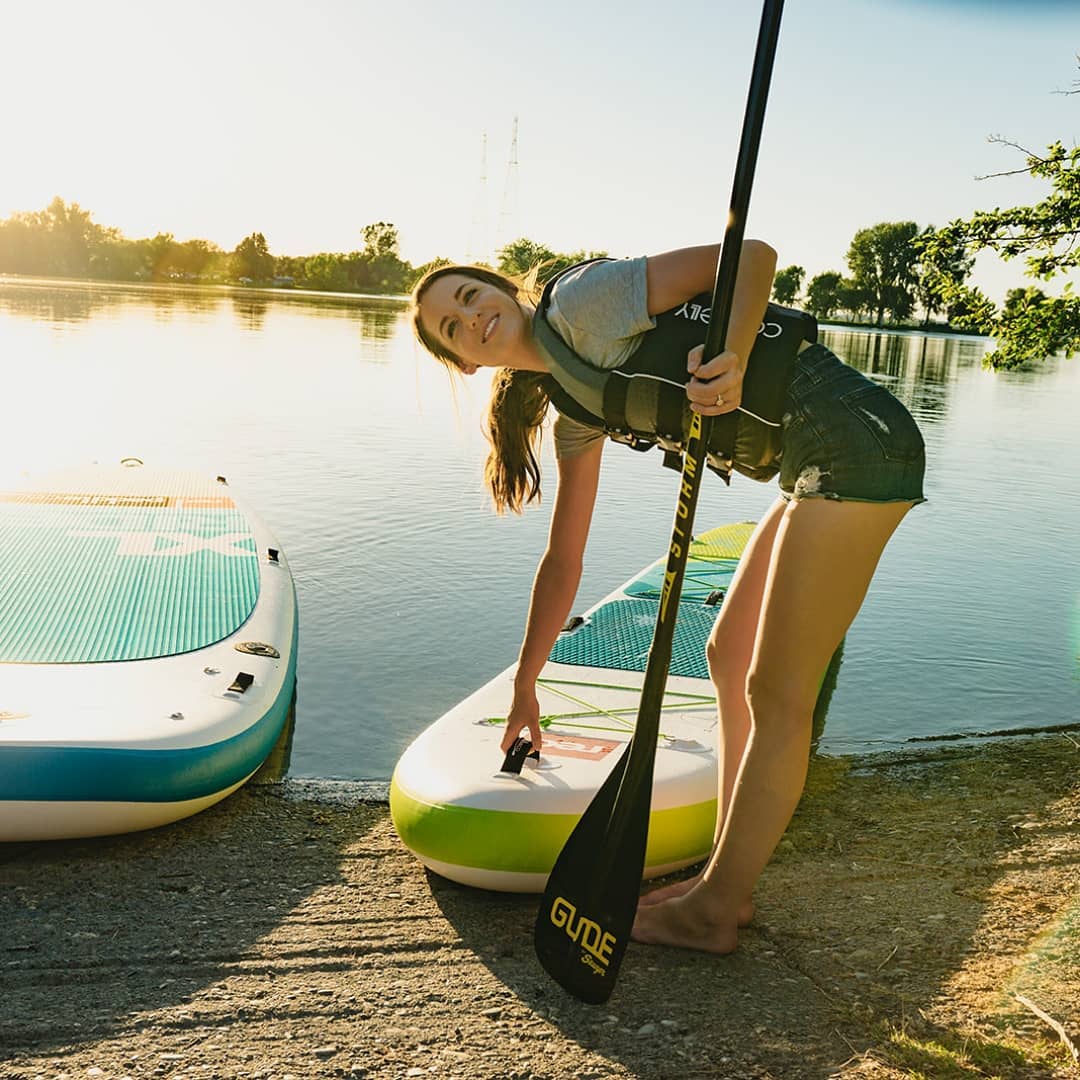
How to Check the PSI on Your Inflatable Paddleboard (and Why It Matters)
If you’ve ever squinted at the little dial on your paddleboard pump and thought, “Is this thing even working?”, you’re not alone. PSI – pounds per square inch is one of those things nobody really explains when you buy an inflatable paddleboard. But trust me, knowing how to check (and adjust) your PSI can make a huge difference in how your board feels on the water.
Whether you’re brand new to paddleboarding or you’ve just never paid much attention to your air pressure, this post will walk you through it. Let’s take the guesswork out of getting your paddleboard adventure-ready.
What the Heck Is PSI, and Why Should You Care?
PSI stands for “pounds per square inch,” and it’s a measure of how much air pressure is inside your board. For inflatable paddleboards, this matters… a lot.
When the PSI is too low, your board will feel floppy, unstable, and drag in the water. But when it’s properly inflated? You’ll feel solid, balanced, and way more confident with every paddle stroke.
💡 Most quality inflatable paddleboards should be inflated to a minimum of 15 PSI. Some higher-end models can go up to 20–25 PSI. A higher PSI rating usually means your board has stronger construction and can hold more pressure without losing shape.
How to Check the PSI on Your Paddleboard
Use the Gauge on Your Hand Pump
Most manual pumps have a built-in pressure gauge, but here’s the catch, it doesn’t start moving right away. You typically won’t see any action on the dial until you’ve pumped to at least 1 PSI.
So many people have brought “broken” gauges into my shop over the years, thinking they didn’t work, when really they just hadn’t inflated the board enough for the gauge to register anything yet.
Keep going. Once the needle starts to climb, you’re in business.
Or Use the Gauge on Your Electric Pump
Electric pumps make life a lot easier, and most come with a gauge built right in. Some have digital readouts, others use a dial, it all depends on the model.
Set your target PSI (e.g., 15) before starting the pump, and let it do the work while you get your gear organized. Just make sure to check the valve pin position before you hook up the hose (more on that in a sec).
Pro Tips for PSI and Hot Weather
Here’s where it gets a little more advanced and super important if you’re paddling on a hot summer day.
🌡️ When it’s over 90°F, the air inside your board will expand. That means if you inflate all the way to 15 PSI in the heat, your board could actually exceed that pressure while it sits in the sun, risking damage or even a popped seam.
On hot days, aim for just under the max PSI. If your board’s recommended pressure is 15, stop at 13–14. You’ll still get great performance, and your board will thank you for not overfilling it in the heat.
Bonus tip: Don’t leave your board fully inflated in the back of your car or baking on the beach. Find some shade or cover it with a towel.
Common Mistakes (and How to Avoid Them)
One of the most frustrating moments I’ve had (and seen plenty of others have) is when you spend all that time pumping… then pull off the hose with the valve in the down position.
😩 Whoosh! just like that, most of your hard-earned air escapes. Even if you catch it fast and twist the valve pin back up, the pressure is usually gone, and you’ve got to start over.
Double check before inflating or removing the hose:
-
The valve pin should be in the UP position
-
Push and twist to switch between up and down
Not Sure What PSI Your Board Needs? Here’s How to Find Out
Don’t guess, every board is different.
✅ Check near the valve – most boards have the recommended PSI printed right around it
📖 Check the manual – if you still have it
🌐 Google the model – if all else fails, search the brand + model + “recommended PSI”
As a general rule:
-
Budget boards: ~12 PSI max
-
Mid-range or premium boards: 15-20+ PSI
-
Heavy-duty boards with drop-stitch construction: up to 25 PSI
Quick Recap: Your PSI Checklist
Before you hit the water, run through this mental list:
✅ Know your board’s recommended PSI
✅ Use the built-in gauge on your hand or electric pump
✅ Don’t freak out if the gauge doesn’t move at first, keep pumping
✅ Adjust PSI for hot weather (go a little under max)
✅ Make sure the valve pin is UP before detaching the hose
✅ Expect a bit of a workout but it’s worth it for a smooth, stable ride
Want More Confidence With Your Gear?
We cover all of this (and so much more) in our Intro to SUP course. If you want to feel confident about your setup from the very first time you hit the water, this is where to start.
And if you’re ready to flow, our online paddleboard yoga classes walk you through every pose, no prior experience needed.
Whether you’re just starting out or fine-tuning your paddleboarding routine, we’ve got your back.
